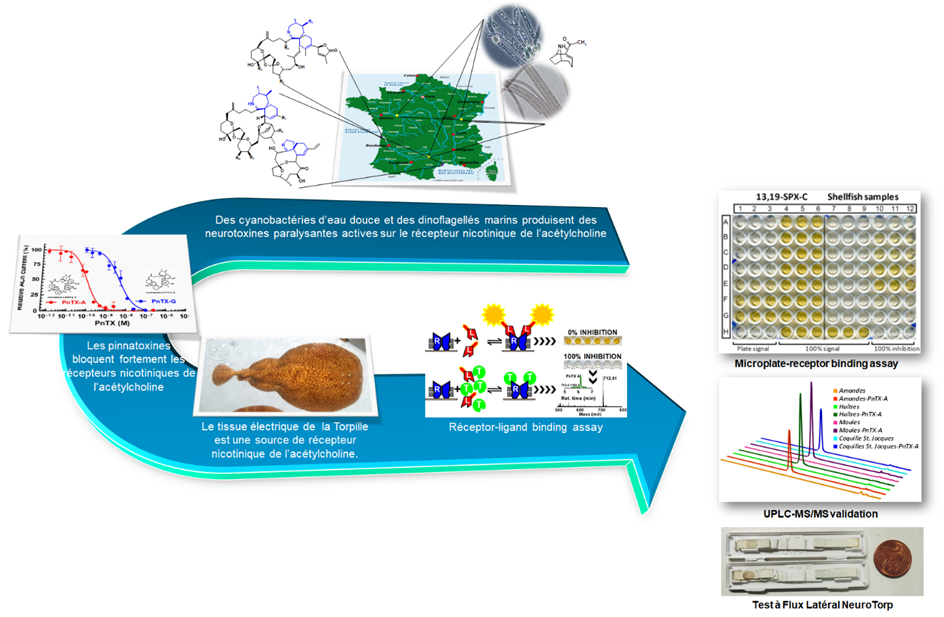Taking advantage of our research concerning the neuromuscular junction and the elucidation of the mode of action of neurotoxins, namely anatoxin-a and cyclic imine toxins, we have developed a series of detection kits for paralyzing neurotoxins, based on their mode of action as agonists and competitive antagonists of nicotinic acetylcholine receptors (Araoz et al., 2020)(WO2012/10378 A1, WO2017108115 A1).
- The microplate-receptor binding assay is a target-directed high throughput method for rapid detection of the cyanobacterial freshwater anatoxin-a and of the marine pinnatoxins, spirolides and gymnodimines in environmental samples and shellfish extracts with minimal sample handling, reduced toxin cross-reactivity and matrix effect. It compares to mass spectrometry-based methods in terms of limit of detection and it is commercialized by Abraxis-Eurofins.
- The NeuroTorp Lateral Flow Test is a receptor-binding assay, based on the high affinity of cyclic imine toxins for the nicotinic acetylcholine receptors which is immobilized on the test-line of the lateral flow strips. This approach is very useful for field detection of shellfish contaminated with neurotoxins.

Receptor-based
detection of neurotoxic agents. Nicotinic neurotoxins present in environmental samples and shellfish extracts
can be detected using microplate binding assay or lateral flow test based on
nAChR immobilization and toxin recognition.